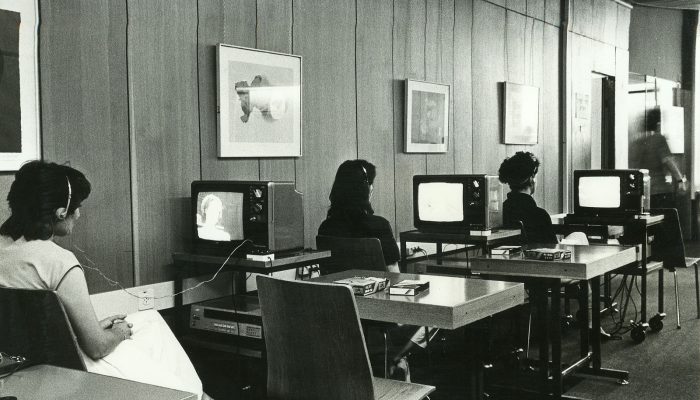
Credit: University of Haifa Younes & Soraya Nazarian Library
Attending conferences is expensive and time consuming, so going to all the conferences relevant for your research topic(s) is an impossible mission. One solution might be to attend (parts of) conferences remotely. Suzanne Atkins, postdoc at ETH Zürich, Switzerland, discusses the pros and cons of remote conferencing.
 Last month the Geological Society of London live-streamed their celebration of 50 years of plate tectonics. Here at ETH we joined the love-in, camping out in the lecture theatre for two days. This follows the trend of many conferences to live-stream sessions or make them available on-line afterwards. But can video conferences replace the real thing? And would we want them too?
Last month the Geological Society of London live-streamed their celebration of 50 years of plate tectonics. Here at ETH we joined the love-in, camping out in the lecture theatre for two days. This follows the trend of many conferences to live-stream sessions or make them available on-line afterwards. But can video conferences replace the real thing? And would we want them too?
On paper, there are so many reasons to support video conferencing and replays. The most obvious one is financial. Many students are limited to local conferences and even professors have to watch their expenditure. The eye-watering cost of a large conference like EGU makes annual attendance unfeasible for many scientists, especially when extras like beer are factored in. If you’re only interested in one or two sessions, dropping in remotely makes far more sense than dragging yourself halfway across the continent for an afternoon.
But there are plenty of other reasons. Here at ETH, our flights make up around 60% of the department CO2 budget. Yes, I could take the train but I’m too lazy and impatient (I know, I know), especially if I’m only interested in half the conference. This doesn’t even take into account the vast carbon footprint of the hospitality industry, to which we are contributing every time we stay in a hotel or eat at a restaurant. Remote conference attendance is therefore the only really defensible environmental option.
The attraction of attending a conference where I can sleep in my own bed is high, but for academic parents, or even just academics with a life outside work, the benefits of cutting a few trips off the yearly circuit without missing out are obvious. Especially in the summer season, when we’re all trying to cram in holidays and a bit of teaching-free research time, the seemingly endless round of meetings and workshops can end up feeling more of a chore than a pleasure.
This brings me to my final point in favour. For a remote conference, etiquette is far more flexible than in person attendance. No one at the conference can see you checking your emails, or dipping in and out to talk to students. The university WiFi is nice and reliable. And the quality of the coffee is just so much more … predictable.
So, what are the drawbacks? Why don’t we all switch over immediately? Obviously attending conferences remotely can make it difficult to present your own work and get feedback, which is invaluable for us. We will never be able to fully replicate digitally the experience of a long poster discussion, chatting to someone after a talk, or the serendipitous meeting in the coffee queue.
But there may also be some subtler disadvantages. At cash-strapped institutes, remote conferencing will allow staff and students who otherwise couldn’t attend to see the talks. But it might also lead to pressure, particularly on students and junior researchers, to cut expenditure by never leaving the building. That deprives them of the networking and presentation opportunities that conferences offer. The flip-side of this is that conferences would get boring scientifically. The same few faces would attend every time, starving the community of new ideas and input. Both of these seem somewhat extreme endpoints, which could be guarded against by careful management within institutes and by conference organisers, and the availability of grants and scholarships for attendance.
So all in all, I think I have to conclude that live streaming conferences seems a sensible way to go. I can even head off to my post-conference Friday beer in the common room afterwards. Cheers!




